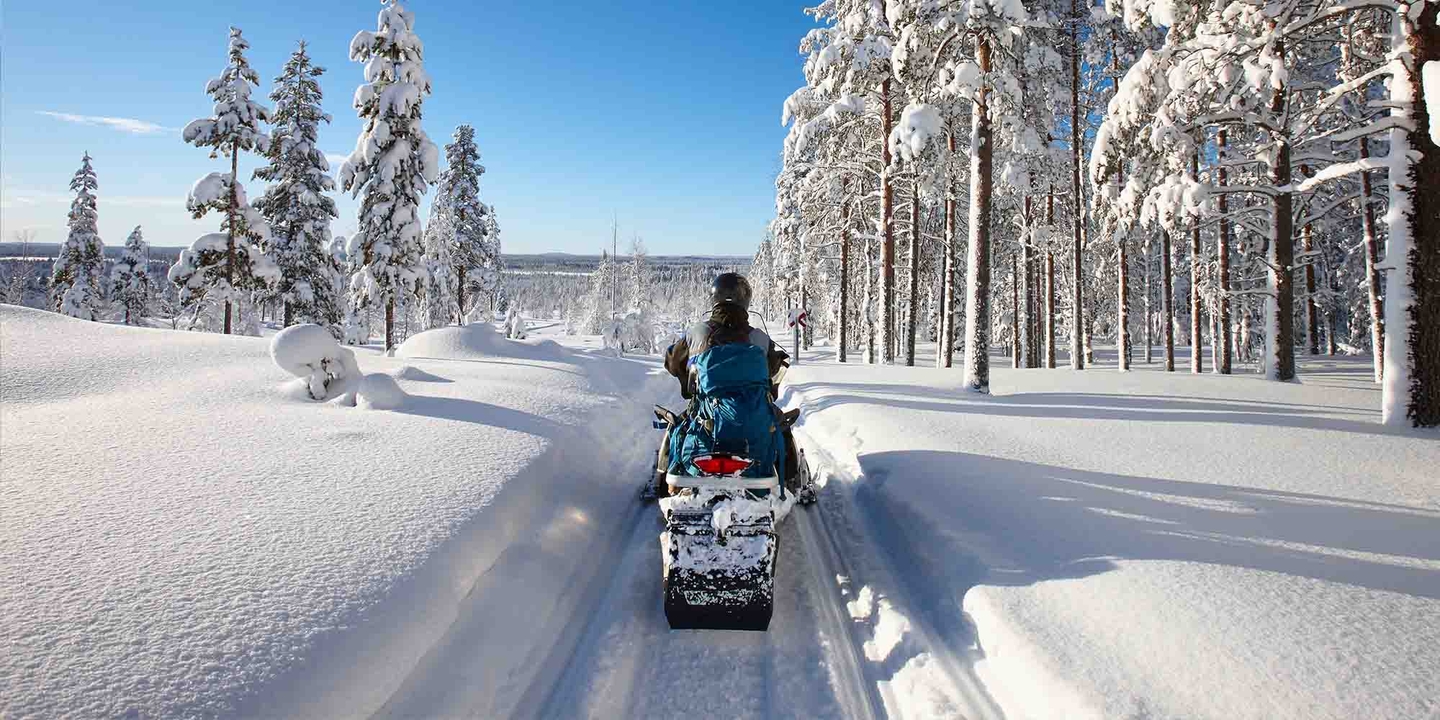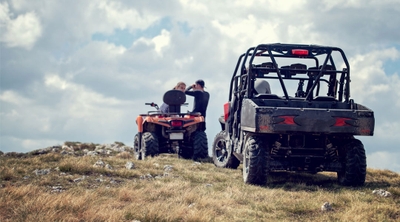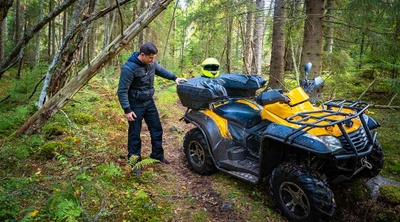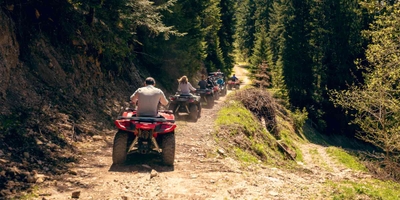How to store a snowmobile
3 min read
Picture it: clear skies, crisp air, the first snow of the season, and you’re at the trailhead with your snowmobile, pumped and ready to go. Only your sled — the one you towed all the way there — won’t start. Now, you’re disappointed because you realize that had you maintained and stored your snowmobile properly, you would not be stuck.
Scott Jones has witnessed buddies experience that disappointment firsthand. The longtime sled owner is the executive director of the Colorado Snowmobile Association, which formed more than 50 years ago and currently has a program to maintain about 3,000 miles of trails across the state.
Ignoring your sled’s maintenance needs before storing it for the off-season is a rookie mistake, Jones says. And even if you have snowmobile insurance, it likely won’t cover problems that arise from not storing it properly.
Fortunately, you can avoid experiencing a crushing nonstarter with some smart snowmobile storage tips. “Spend half an hour to an hour, do a little bit of thinking and planning, and you’ll be much happier in the fall,” he says.
What should you do to prepare your snowmobile for storage?
1. Clean off the dirt
Before storing your sled, wash it off. “They do get dirty and muddy, especially in parking lots. That’s usually where you tend to pick up a lot the muck,” Jones says. The snow usually gets a little thin on your last ride in the springtime, adding to the grime. Having a gleaming ride come fall isn’t just nice — you’re also helping prevent corrosion.
2. Store indoors
Wherever you live, put your snowmobile inside or in covered storage, Jones advises. Don’t be tempted to leave the sled outside with a tarp tossed over the top. Snowmobiles tend to be reasonably durable equipment, but they’re not immune to the weather.
If you don’t have a spot inside for storage, don’t worry. Jones had an open trailer for a long time and still protected his sled in the off-season by raising it a bit, putting a couple of high-quality tarps over the entire trailer, and then sealing the whole thing with plastic wrap.
You want to keep as much moisture out as possible. “The more indoor your storage is, the happier your snowmobile is going to be,” Jones says.
3. Give your sled a lift
Get your sled off the ground. Otherwise, moisture collects underneath from heavy dews, causing damage. The setup could be as simple as some blocks or even four-by-fours screwed to a lumber frame, Jones says. Even six or eight inches off the ground makes a big difference, he adds.
“If you can get the suspension to hang, that’s great,” he says. “Jack up the sled and then position some wood blocks to hold the frame up in the air high enough to get the suspension to hang loose.” A specialized snowmobile storage rack could achieve this, but wooden blocks are fine.
4. Keep the mice away
Rodents can damage to a snowmobile over the summer if you’re not careful. They’ll eat through sled parts, including electronics, during the warmer months. And you might not discover their wily ways until you get the sled out of storage in the fall.
Jones recalls a particularly snowy autumn in Colorado that insulated rodents from the cold, producing an enormous mouse population the following summer. “Come up with a rodent management plan,” he advises. “If you’ve got a good feral cat, that works.”
5. Look up the fuel info
Rather than guessing how to prepare your fuel tank for the off-season, follow the manufacturer’s guidelines for your specific sled. That information should be readily available online.
“Every manufacturer is a little different in what they are recommending,” Jones says. “Some will tell you to turn the fuel off and run the sled dry. Others will tell you, ‘Don’t do that.'” What works for him — leaving the tank about half full and adding a little fuel stabilizer — could cause you nothing but trouble.
6. Prevent moisture build-up
Water is a double-edged sword. Frozen water makes snowmobiling possible, but too much moisture rusts metal parts and messes with electronics. Jones recommends airing out your trailer before storing the sled. “Grease all the joints,” he says. “Make sure you lubricate it really well.”
Fogging the engine, basically putting a light coat of oil in the motor, is a common dealer recommendation, but Jones only suggests doing that if you’re storing the sled for several years. He skips engine fogging for annual summertime storage and hasn’t had a problem. Some of his friends tried it and didn’t have the best results. Jones cautions that fogging can potentially cause trouble with the fuel system.
7. Tend the battery
Jones uses a battery tender to maintain his snowmobile battery during the off-season. Hardware stores and dealerships typically sell these devices for around $40, he says. “They make solar ones, so you don’t even need power. It can sit in the window,” he adds. “They will keep your snowmobile very happy.”
”Snowmobiles have picked up much more reliability over the past 20 years, Jones observes. “As long as you treat them decently, they’ll treat you pretty decently.”






